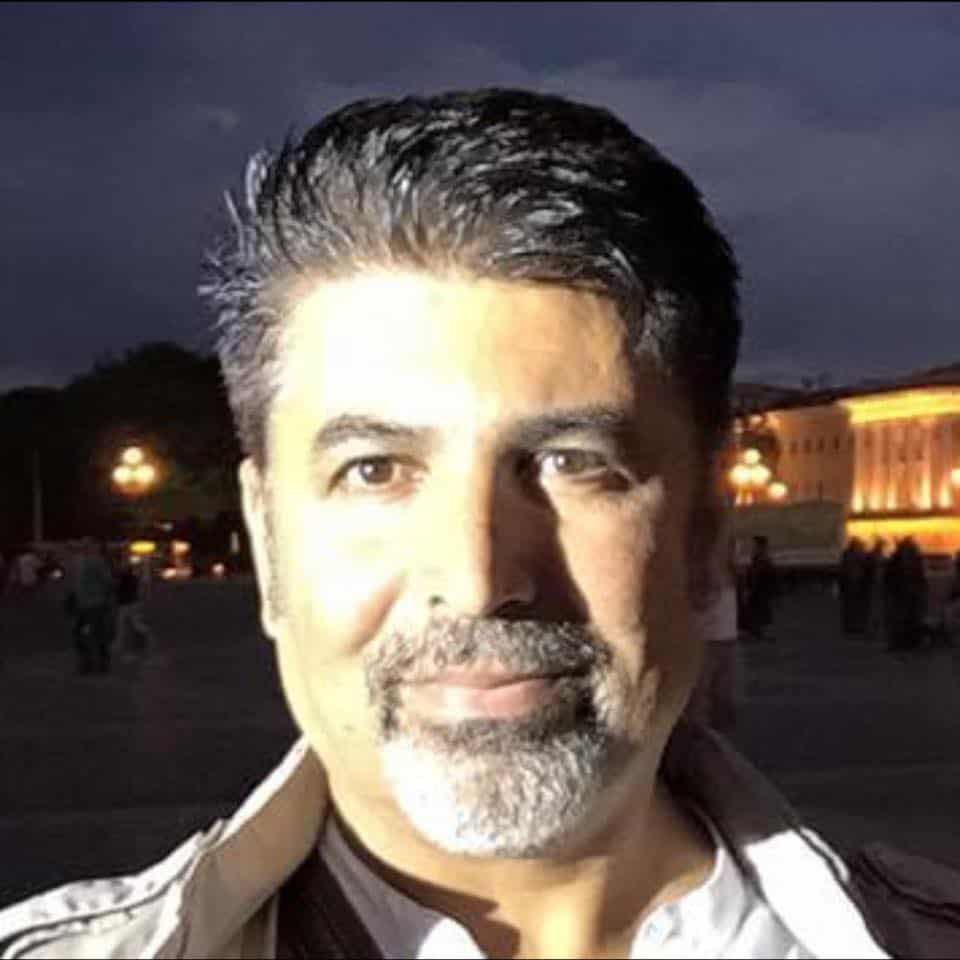Syrian (Kurdish) novelist and surgeon Alan Kikani has recently published his fourth narrative work, a novel titled The Obsessed, released by London-based Ramina Books, in which he skillfully merges an introspective narrative perspective with a meticulous anatomical exploration of the fictional character. The novel centers on Suhaib, a talented young man raised in a modern family, with a father who is a university professor teaching in the United States. Yet despite this seemingly stable environment, Suhaib becomes psychologically overwhelmed by obsessive–compulsive disorder, a condition that gradually and adversely shapes the course of his entire life.
The novelist employs his medical background to probe deeply into the internal contradictions of personality. Through an intense and meticulously crafted narrative analysis, he succeeds in steering the development of both events and characters. The nuanced detail he offers provides the text with a distinctive perspective from which the narrative unfolds and grows in complexity. This is precisely what enables the characters to perform their intended roles as dynamic agents within the expansive structure of the novel. Critically—and to some extent artistically—this technique, whether consciously adopted by the novelist or imposed by narrative necessity, demonstrates that any attempt to circumvent these layered, non-narrative elements would undermine the work in favor of mere linguistic ornamentation.
Suhaib’s obsession begins with religious rituals; he constantly suspects that he has not performed his prayers correctly. Over time, this condition develops into a pathological disorder requiring medical intervention. The novel does not present this diagnosis in isolation. Rather, it constructs what resembles a psychological case file, in which environmental and social determinants collectively bear responsibility for producing a psychopathic—or more accurately, a severely compulsive—personality. Through a sequence of events, the narrative reveals a life marked by flaws, fears and unresolved anxieties that gradually exacerbate Suhaib’s mental state. The only person who genuinely struggles to understand and cope with his condition is his mother, Zahara al-Shiyah, who makes every effort to protect her son, albeit in vain.
In Dr. Huda al-Khayyāt’s clinic—where Suhaib is taken as his condition deteriorates—the doctor succinctly diagnoses him as a rigid bigot governed by a single, absolutist idea, one that leads him to view all who fall outside his narrowly defined religious circle as inferior and alien. She concludes that no external intervention can truly help him; only Suhaib himself possesses the agency to escape the constricted world he has constructed. His case summons every narrative voice in the novel into participation, regardless of the status of those voices—whether central figures or marginalized characters. These intersecting and overlapping voices critically shape the work into a polyphonic novel, in which multiple authoritative perspectives guide the development and flow of the events.
Suhaib’s father, Akram al-Atar, is also deeply implicated in his son’s psychological turmoil, often becoming the primary target of Suhaib’s religious obsessions and verbal assaults. Through this fraught relationship, the narrator unveils what can be identified—in critical terminology—as a correlative object, one that reflects Suhaib’s parallel, isolated inner world and the formation of his distrustful Weltanschauung (worldview). To achieve this, the novelist employs his medical and narrative expertise with considerable skill, constructing an exceptional and complex character whose representation demands a broad descriptive framework and rigorous analytical treatment, both narratively and psychologically.
Interestingly, The Obsessed guides the reader step by step into the gradual deterioration of Suhaib’s condition, ultimately leading him to become a jihadist fighting for the terrorist organization ISIS in Syria and Iraq. This ending emerges as a logical narrative progression, given that the novel has incisively exposed—and imaginatively reconstructed—the trajectory of a young man religiously misled due to a deeply fragile psychological structure and a profound lack of life experience. At this juncture, the novel also situates Suhaib’s personal collapse within the documented historical realities and the intense political polarizations that have ravaged the region in recent years, thereby linking the individual’s downfall to the wider socio-political landscape.
Suhaib eventually acquires a new identity as amir—the leader of a terrorist group—adopting the name Abu Anas al-Najdi and assuming a ruling position in a remote village where his absolute authority reflects his earlier obsessions. In this setting, he carries out harsh and oppressive punishments against innocent villagers, grounded in distorted interpretations of Islamic laws the Sharia. The novel thus opens a window onto an abnormal and violent world governed by erratic, eccentric powerful persons. Within this environment, human vulnerability is rendered blatantly visible as various characters confront unprecedented dangers and moral collapse.
Originally written in Arabic, the novel employs a richly textured language through which the author illuminates the darkest dimensions of his fictional characters. The linguistic forceful stream not only elevates the narrative with eloquent and finely crafted expressions but also transforms the text into a journey of irresistible contemplation. Although the Arabic novelistic discourse relies heavily on stylistic and rhetorical depth, such linguistic density can at times constrain the broader narrative horizon. In this case, however, the novelist largely succeeds in balancing expressive richness with narrative progression, ensuring that language enhances rather than overshadows the storytelling.
As a highly skilled novelist, Kikani executes a fresh narrative experiment that expands the possibilities for novelistic discourse on sociopsychological themes. The Obsessed is a work that descends narratively into the deepest recesses of the human psyche, operating not to preach or prescribe solutions, but rather to confront and excavate reality through deeply layered narrative strategies. In this text, reality is transformed into an expansive imaginative narrative where events and characters are delineated with precision, meticulously crafted to inhabit the novel’s conceptual and thematic design. Through its dynamic narrative energy, the work thoroughly describes, analyzes, and intricately weaves its core psychological concerns into a coherent literary trajectory. Significantly, the novel neither exaggerates disturbing realities nor denies their manifestations—whether these appear as profound psychological disorders or as socio-political and religious radicalization. Instead, it presents these phenomena with a measured, steady artistic integrity.
Nassir al-Sayeid al-Nour
November 22, 2025

A Note About Dr. Alan Kikani, author of The Obsessed:

Born in 1972 in Aleppo, Dr. Alan Kikani is a Syrian Kurdish novelist and creative writer who has published extensively across multiple literary forms, including the short story, the novel, and various reflective writings in a wide range of media outlets. Prior to The Obsessed, he authored three novels: The Red Nights of al-Raqqah, Walat’s Long Night, and The Diaries of a Medical Lieutenant. He currently resides in Saudi Arabia, where he works as a specialist surgeon.


Nassir al-Sayeid al-Nour is a Sudanese critic, translator and author.

